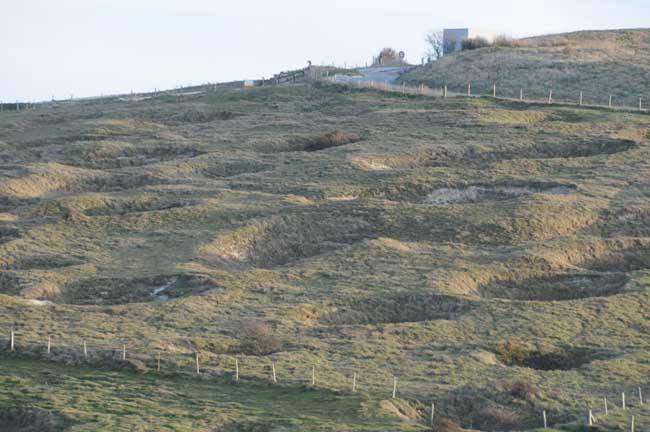As a fairly regular visitor to the Pas-De-Calais I decided one day to make a trip to France with the sole purpose of discovering the many pillboxes and gun emplacements which litter the French coastline and make up the Atlantic Wall.
A dozen or so trips later and it still hasn’t lost its appeal but I cannot help but think I’ve only seen such a small section. So I thought how daunting it was the first time I went and have decided to write a small Beginners Guide to help coax more people to this fantastic and easily accessible wealth of..well, concrete.
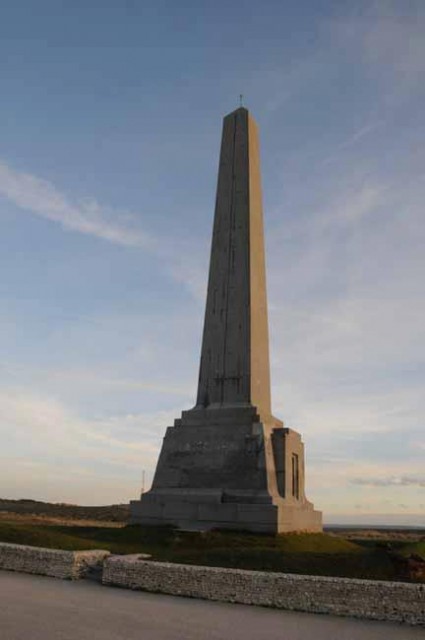
You can break the Atlantic Wall tour of Calais into approximately four different areas, the beach and hill top of Cap Blanc Nez; the beach and dunes at Wissant; the rolling hills of Cap-Gris-Nez and the fantastic museum and casemates of BatterieTodt. All are easily accessible from either the ferry port at Calais or the Euro-Tunnel terminal between Coquelles and Sangatte. With Cap-Blanc-Nez approximately fifteen minutes away and BatterieTodt around a twenty minute drive.
Cap Blanc Nez is a wonderful nature haven. It is a very distinct landmark visible for miles around due to the large monument on the summit. This is the Royal Navy Dover Patrol memorial erected in 1921. It was demolished by the Germans during WW2 and reassembled after liberation. A lot of work has been done in recent years to install paths and decent parking facilities to make the place user friendly. From the memorial you can see the cratered landscape where artillery duels took place across the Channel.
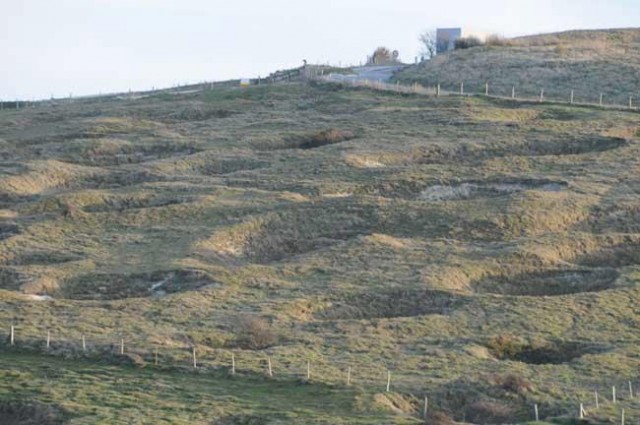
The concrete emplacements at Cap Blanc Nez are mainly a mixture of observation and personnel bunkers. It has a wonderfully diverse range of bunkers and pillboxes all situated on either the ridge or the two slopes. There are some fantastic views from up here back across to Dover so don’t forget your camera!
Wissant is a real gem of a coastal resort. You drive into it from a country road and end up on a beachfront. Of sand dunesAs you walk the promenade you realise that the modern prom has been incorporated into an anti-tank wall, itself very impressive.
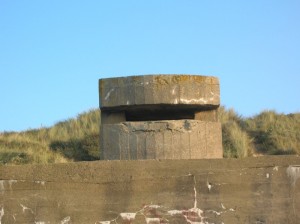
Unfortunately for bunker lovers the local authorities recently decided to demolish some of the best known installations at Wissant on the grounds of health and safety; not something you readily associate with the French. The character of the place has changed, but it is still worth a visit. Looking out to sea and along the dunes, it really gives you a good impression of what the Allies would have faced had they landed in the Pas De Calais. Taking this perspective you can see why the Allies chose Normandy. In short this would have been some Killing zone and it is debatable if such a landing as D-Day would ever have been a success here.
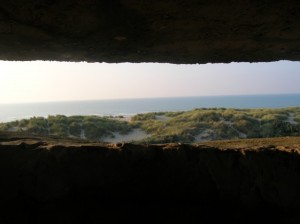
Cap Gris-Nez is a real mix and match of concrete bunkers, flak platforms, observation outposts and control bunkers. In fact, when you arrive at the car park near to the present day coast guard lookout you can’t help but fall over them. A scenic path takes you on a loop of the cliff top and past many of the emplacements. However, it is possible to see other sights such as the bases of the radar cupolas and also a very impressive barracks which you can walk in and along some of the trench system that still exists today, though you will be sharing them with sheep!
BatterieTodt was, as the name suggests a large gun battery made up primarily of four gun casemates each with a number of support bunkers for ammunition storage , personnel and fire support/observation. It took it’s name from Fritz Todt the head of the organistion responsible for construction of many of the Atlantic Wall defences. Construction started during the Autumn of 1940 and it was declared operational in January 1942. In all the four casemates used some estimated 12,000m3 of concrete each and an amazing 3,200 tonnes of steel between them.
It was this battery that infamously shelled the coastal towns of Dover and Folkstone throughout 1942 until it’s fall in 1944, claiming more than forty lives.The guns finally fell silent on the 29th September of that year after a joint operation between the famous Dover guns Winnieand Pooh and the Canadian North Shore Regiment.
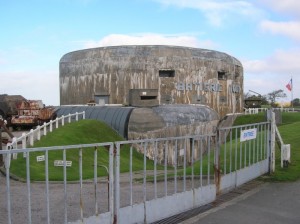
Today Turret 1 is a fantastic museum. The Musée du Mur de l’Atlantique (you can check it out at www.batterietodt.com); is full of both German and Allied artifacts. It really gives you a sense of what it must have been like not only to have served in such a large battery but also to have had to construct it.
As always it is wise to check opening times as it does close out of season on certain days. Outside the Museum there is plenty of parking and also a wonderful little café, great for a beer or glass of wine in the summer months or a coffee or cognac for those colder months. It has a full menu so there is something for every palate, from basic frites to the more adventurous moules. Chips or mussels for those like me who last spoke French at school! (The steaks are really good, too– Rev Ed)
Once parked up turret 2 is within easy walking distance, though be warned it is overgrown and normally very wet and slippery. Set in a nature park it is used as a bat sanctuary, although the main gun position is open and can be viewed from a specially installed platform.
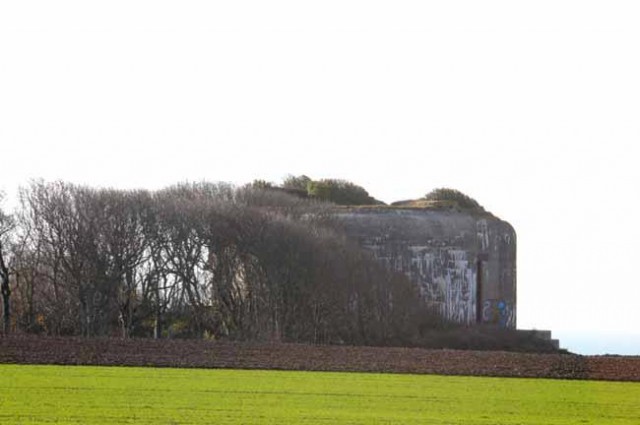
Turret 3 is situated on the edge of a small road around a hundred yards or so from the last but is fenced off to the public due to the fact it was blown up in an accident in 1945! (I found it to be easily accessible quite recently – Rev Ed)
Turret 4, again, is an easy walk and this is probably the most interesting of the group. It is situated on the edge of a field and you are ableto walk in and wonder at the enormity of the construction. There is some original graffiti still present; but although the art has been added to in recent years the years; it is still very impressive. Again, torches and decent boots are a must.
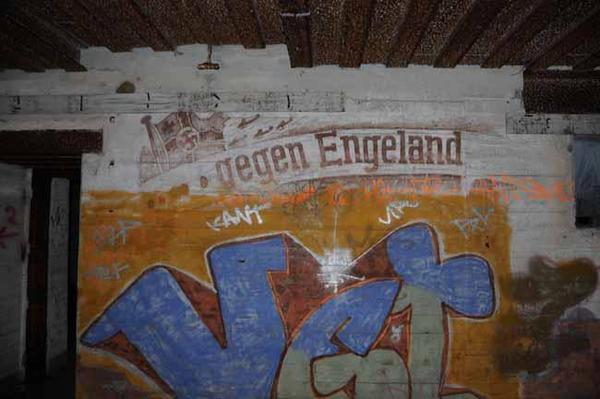
As with pillboxes in Britain, one should always remember to take care walking round these places. Debris can and does fall from the structures and there are various trip hazards and things to bump your head on. Also remember to stick to the roads and footpaths as this area is farming country. That said, a ploughed field often throws up a whole host of relics, but be warned a lot of what you will find is still live and dangerous so best left well alone!
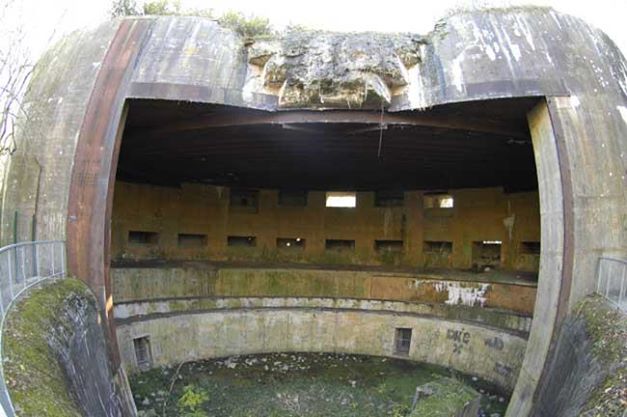
Calais is so accessible and yet so often ignored or at best “Just a Port for Day trippers”.
P&O operate ferries from Dover and the Euro-tunnel terminal is just down the road at Folkstone. It makes for a great day out or weekend depending on pace. There are plenty of hotels to choose from.
I generally stay at the Hotel du Golf on the Calais beachfront.
If you fancy something a little more grandeur try the Hotel Normandy in Wissant (www.lenorman-wissant.com). It has an award-winning restaurant and the owner, Mr David Davies just happens to own the BatterieTodtMusée as well. If you’re interested in bunkers that’s some real estate!
Driving is the only real way to travel between the four sites. Its not as daunting as it seems but remember to check you have adequate insurance cover for your car.You will also benefit from a good map. By far the best map of all is the IGN Blue Series map entitled Calais Site Des Caps Foret De Guines” number 2103 ET. With a scale of 1:25000 it shows most of the bunkers you will be visiting. You can order these maps via web sites or from most good bookshops As it’s a “blue” tourist map its in the top 25 and you may be lucky to find one in stock. Satnavs are great to get you around, but the addition of a printed map is always useful in these situations.
Enjoy!
By Phil Hodges for War History Online
